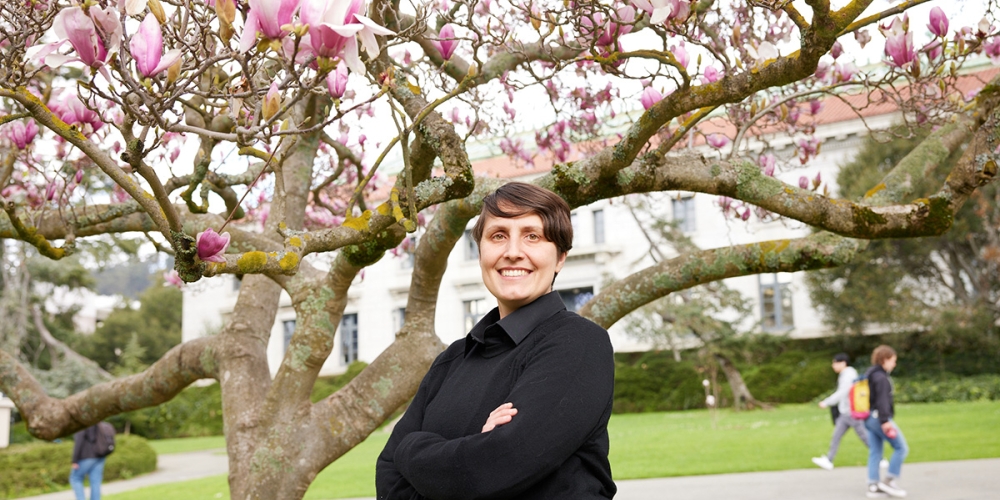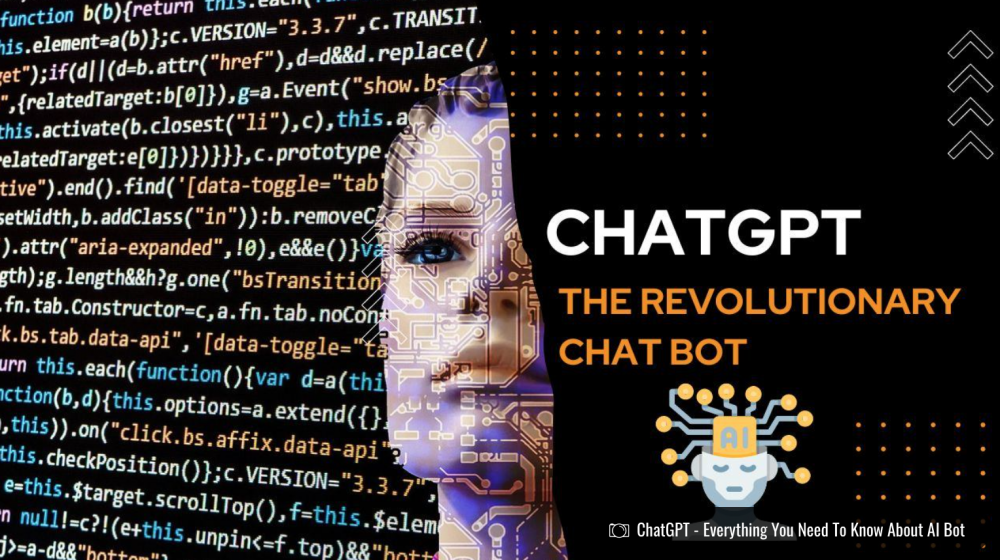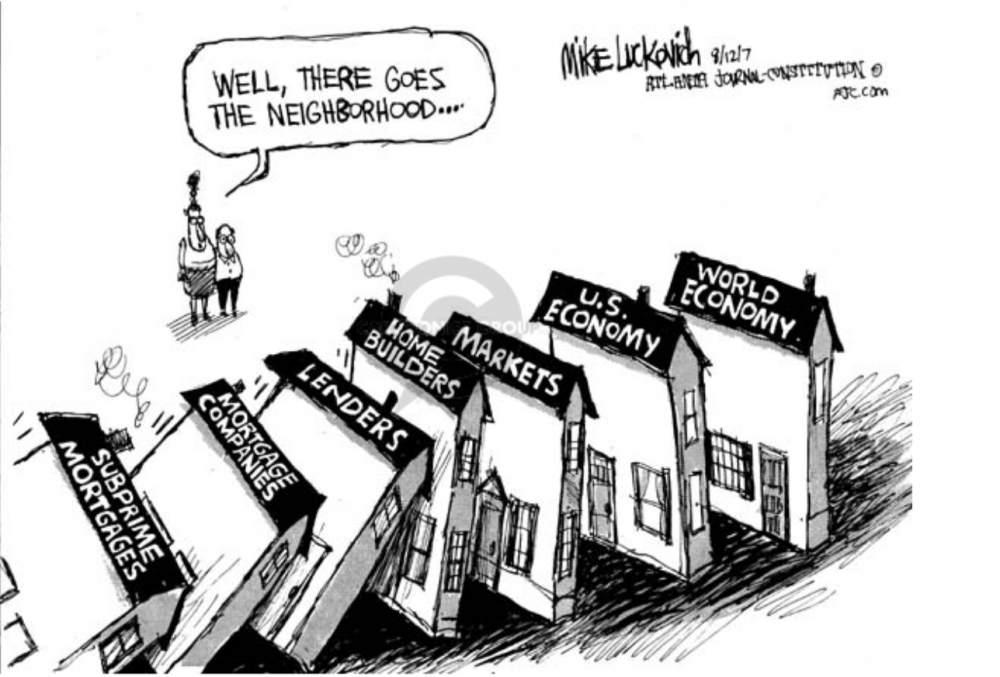
Professor Nicole Starosielski is a professor in the Department of Film and Media at the University of California, Berkeley. She heads Sustainable Subsea Networks, a research project focused on the physical infrastructure associated with the global Internet. Here, Professor Starosielski speaks with BER students Caroline and Emily on the growth of the digital economy, government regulation of digital infrastructure, and the need to prioritize equity and sustainability as the industry grows to meet challenges posed by artificial intelligence and climate change. Professor Starosielski teaches UC Berkeley graduate and undergraduate summer courses on global digital infrastructure for those interested in learning more about these topics.
Interviewed by Caroline Crowley and Emily Vu
Caroline Crowley: Please introduce yourself, describe your work, and give a brief overview of the pathway that brought you into your current research on digital infrastructure.
Nicole Starosielski: I’m Nicole Starosielski, a current professor in the Department of Film and Media here at the University of California, Berkeley. My research primarily deals with digital infrastructures, and by that, I mean all of the physical installations that support the internet—data centers, subsea fiber optic cables, terrestrial fiber optic cables, as well as last-mile infrastructures such as cell towers and satellite infrastructures. It was a long, winding pathway to get here that could take the entirety of the interview, so let’s dive in, and then I can always circle back to that story.
Crowley: Sounds good. On a broad level, what do you see as some of the biggest challenges for this industry over the coming years, primarily any that your own research may have touched upon?
Starosielski: To speak specifically about the subsea cable industry, some of the challenges include a currently shifting set of industrial dynamics. Companies, referred to in the industry as the OTTs—“over-the-top” content providers like Google—are playing a bigger and bigger role. There is a shifting economic landscape, a shifting of who drives the industry. We’re also seeing similar movements in the geopolitical landscape. Subsea cables are increasingly featured in the news, so people are paying attention to things like security and resilience. This is especially true because, now more than ever, we’re so reliant on subsea cables. They carry over 99% of all transoceanic internet traffic, and in the modern day, we’re so dependent on digital media and the internet. People are considering this as a human right—the right to information—and thus, that dependency now has a stake that it never had before. Cables have always been political. They’ve connected us since the 1800s, but the degree to which our livelihood and global participation in economic processes depend on them now is unprecedented.
The last thing I personally work on is sustainability. Considering subsea cables as an infrastructure, there’s not a huge margin. This is not a field that people enter where they’re like, “I’m going to speculate a lot and get rich,” but that’s not to say that economic motivations do not drive it. They’re fulfilling a demand that people have, a demand for internet usage and the engagement that interconnection facilitates.
But it’s not a place where you’ve historically seen an overwhelming investment by private equity, for example. Lots of people have gone bankrupt after the dot-com bubble; you don’t see the same level of investment you might witness in the data center world or in AI right now. It’s like looking at a house: You can invest in top-grade plumbing, and it will save you a lot in the long run, but most people buying a house or fixing one up to sell are not necessarily looking at the plumbing. They’re like, “Oh, look at what color it’s painted” or “Let’s look at the living spaces.” In this situation, they look at the infrastructure, the internet, aspects that are closest to their experience and that they’re in direct contact with. And so there’s less attention to it and less of a margin. That’s why you have entire industries that are built around home design and home improvement. But largely you don’t have a whole industry based on going door to door, marketing minor improvements to plumbing that you’re never going to see, because it’s the base infrastructure.
Crowley: Amazing. Thank you for that. I think that transitions really nicely into our next section, which is looking at how we push towards those investments, those future initiatives.
Emily Vu: Yes. Just to get started, how would you describe the dynamic between the government and private companies in this industry?
Starosielski: It’s a very interesting industry. On one hand, there exists a long history of close ties between national governments and private companies. Historically, the government owned many of the telecommunications companies that laid subsea cables. AT&T, for example, had very close ties with the US government… and today those ties are not as tight. There are a variety of reasons for that. However, sometimes, governments remain unaware of what occurs in the subsea cable world.
Right now, we’re seeing increasing governmental interest in regulating and protecting subsea cables. In the Cold War era, there was a lot of government involvement in efforts of deregulation. In the ‘80s and ‘90s, however, a new era began. Through the early 2000s, there was not as much governmental intervention as in the Cold War era.
And now we’re regressing into this heightened geopolitical atmosphere, in which governments are increasingly worried about security. That being said, the subsea cable industry is fascinating because there are no intergovernmental organizations that regulate these systems. You have the International Maritime Organization, the IMO, which regulates the oceans. You have UNCLOS, which is the UN Convention on the Law of the Sea, which does have specifications about subsea cables, but it is the government’s responsibility to enforce them. It’s not a regulatory body that directly patrols the ocean. Therefore, to reiterate, there doesn’t exist any specific body dedicated to regulating subsea cables.
Vu: That’s very interesting! Along those lines, what do you see as the incentives for companies in these industries to prioritize sustainability in the coming decades?
Starosielski: To consider sustainability initiatives, it’s useful to consider the people that comprise the industry. In my experience, the subsea cable industry is full of people who are animated by a sense of purpose to connect the world. Consider Silicon Valley; the common sentiment there is, “I want to develop another app that’s going to make a ton of money or save the world.” There’s an opportunity for innovative, social progress, or at the very least, some substantial monetary payoff.
By contrast, people in the cable industry are like, “I’m going to build a big pipe. I’m going to be an internet plumber, and I’m going to make sure that I’m connected to the people on the other side.” I think people generally want to do the right thing because the margin is not large. There’s no lucrative payoff. Executives in this industry are not sitting on a huge bank, building ships left and right to lay undersea cables. Thus, they generally support our work in trying to develop sustainability initiatives. With shared metrics, they can capture people who are looking for sustainable internet traffic.
In this particular industry, it’s a matter of channeling people’s pre-existing interest in doing the right thing and finding a way for them to actually do that within existing circumstances—which is not that different from everyday consumers. Many people want to do the right thing, and it’s often a question of how. It’s not true of all sustainability efforts in all industries, but I think it is here.
Vu: You see it more as a self-regulating effort than something that requires government intervention, right?
Starosielski: It’s an industry that has historically self-regulated because it doesn’t have an intergovernmental body. Many firms already have practice in the self-regulation aspect of their industry. While this doesn’t work every time, when individual nations regulate, it produces this global inequity. That’s always true; within the subsea cable industry, firms remain in this framework of regulating solely within their territorial boundary. There’s a culture that perpetuates the notion that people should have autonomy over their own systems. Unfortunately, individual systems end somewhere in the middle of the ocean where boundaries blur—and there’s no overarching body that one would respond to.
In order to avoid appointing an oversight body that inevitably is controlled by one group or other, the subsea industry has gone through this process of, bilateral and multi-stakeholder negotiations. It’s a negotiating industry that revolves around conversations between countries.
Therefore, it’s useful to incorporate sustainability as a framework. That way, it becomes a structured part of the industry with historical precedent. Within industries, firms have to work within circumstantial constraints and cultural configurations to succeed. Sustainability can’t be achieved through intrusion, but rather, through assimilation. Firms must decipher how to adapt sustainability to existing cultural practices. That’s what the industry would be on board with.
Crowley: You’ve walked us through many of the policy and general deployment processes. If you had to bring more notice, capital, or investment, towards a specific part of the process, the technology, or infrastructure, where would you suggest more people turn their attention? What areas should people focus on?
Starosielski: Since it’s a slow-moving industry, we have to consider generational progress. Therefore, I believe that the investment should be in people. I find that people are the backbone of sustainability and resilience. I don’t think technology would suitably address any of those problems.
The investments should be in education—for example, I’m currently working on a curriculum to train students in the field of sustainability, as it pertains to undersea cables. If you train people who can think capaciously about sustainability, resiliency, and equitable networks, then those people will know how to sort out the challenges to come. But if you solely train people in one discipline, one aspect, without helping them understand the big picture, that will generate more difficulties down the road.
Crowley: As a follow-up, do you see this as a growing industry? Is this something that Berkeley students can potentially get involved with post-grad?
Starosielski: One hundred percent. At every conference I attend, I hear the same thing: ‘We need more young people in the industry.’ It’s a common refrain at this point. They’ve been trying to appeal to a younger demographic for years now. In truth, it’s very simple—young people are out there, and they want jobs. If you provide money, they show up; it’s magic!
Anybody who wants to enter the field can take my new certificate program this summer at Berkeley. I will personally introduce them to the industry.
Crowley: It’s incredible that you prioritize involvement at the student level.
Starosielski: It’s so important. Consider: where do professors have the greatest impact? Many might cite that our influence can be found in our research, our published work, or our engagement in policy decisions. However, the sheer number of students that we get to interact with eclipses any other form of impact. This is the place where we can truly influence how things emerge in the world—through students. Students are at the heart of any form of academic or societal transformation.
Vu: What would you say a career in this field might look like for a student interested in it?
Starosielski: In digital infrastructure in general, as well as in subsea cables, there are a multitude of different careers. Let’s start with the technical side of things. We need electrical engineers to design power systems for all the various transmission networks that ultimately channel the Internet everywhere. We need optical engineers to figure out how to shoot the light down the fibers in ever more dense ways. We need architects and environmental engineers to design the buildings sustainably. We need computer scientists to work on the equipment that terminates all those signals and switches them. Then we need lawyers because tons of permits, regulations, and policies have to be navigated on a global scale.
This isn’t as simple as setting up shop down the road. If a firm needs to build something in Indonesia, it needs to first understand the local regulations. So, it needs people who can navigate geopolitical environments and complex forms of negotiation.
There’s a whole economic side to this. This field requires experts who can model the profitability of infrastructure, while simultaneously accounting for the impact of the internet and AI. At the same time, it’s a narrative that involves facilities, buildings, and real estate, which makes it a unique and complex economic entity. It’s not just a commodity or a network—it’s a combination of capacity, real estate, and a physical cable lying on the ocean’s floor.
The sheer expansiveness of this field leaves a lot of room for different kinds of specialists. We need people with a social-scientific mindset who can analyze and interpret how all these changes are unfolding. We need social workers and grassroots advocates who can enter into communities and engage with local populations. Honestly, I could keep going. We need every spectrum of environmental scientists, from environmental economics to anything else a cable in the ocean could touch upon. Anyone who could help answer the question: how should the next set of systems be built?
Crowley: Sounds like something inherently interdisciplinary!
Starosielski: Very much so. We get to work with people all around the world, in varying disciplines. It’s a field with a lot of exposure and newness. It’s not like Silicon Valley, where you’re following cutting-edge tech, but the fundamental day-to-day involves sitting at a computer and building an interface. Comparatively, this involves hands-on engagement with communities around the world. You’re working with people who have radically different life experiences and skill sets than you. You’re dealing with differences all the time and trying to figure out how to bridge cultural or professional gaps.
Crowley: As a final wrap-up question, what do you see as the next big thing? What do you see as something that’s on the horizon, concerning either sustainability or the growing digital economy?
Starosielski: The impact of AI is substantial. It’s reshaping how infrastructure is being built. However, this progress exists in a world with finite resources and intensifying climate change. That’s a fundamental contradiction that everyone recognizes. This is not an issue that requires awareness or identification—it requires action. At the same time, globally we have an unequal digital economy. Many areas in the world still lack connectivity—it would be immoral to ignore their participation, or lack thereof, in the global network. Therefore, this isn’t just an issue that involves developing technology and various environmental crises; it’s also about global inequity. The people in this field have to solve that problem or find a way to move forward with all these constraints. That’s a formidable challenge, but also one that I think can be addressed through global collaboration. And I have a lot of faith in the possibility of accomplishing that.
Crowley: I think it’s the running theme—the notion of interconnectivity, both physically through the infrastructure element, digitally through the media, and socially in terms of communal involvement.
Starosielski: I had a great conversation yesterday with someone who runs an internet exchange and she told me something that stuck with me: “Internet infrastructure is community. Without a strong community, you don’t have a strong internet infrastructure. You can’t parachute in—it has to grow from the ground up.” And I completely agree. The theme is interconnectivity, but it’s not just in a technological sense—it’s about social interconnectivity that underpins technological movement. Nothing moves forward without engaging stakeholders first.
Crowley: Thank you so much for coming out to talk to us.
Starosielski: Thank you for setting up this conversation.
Featured Image by Jen Siska



